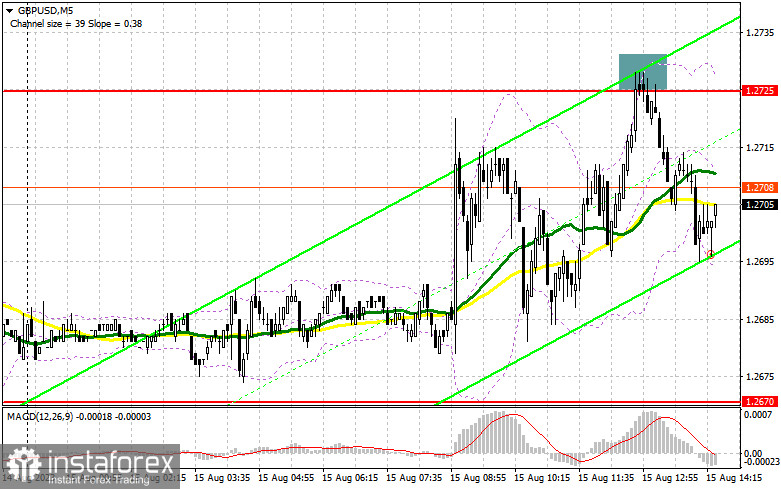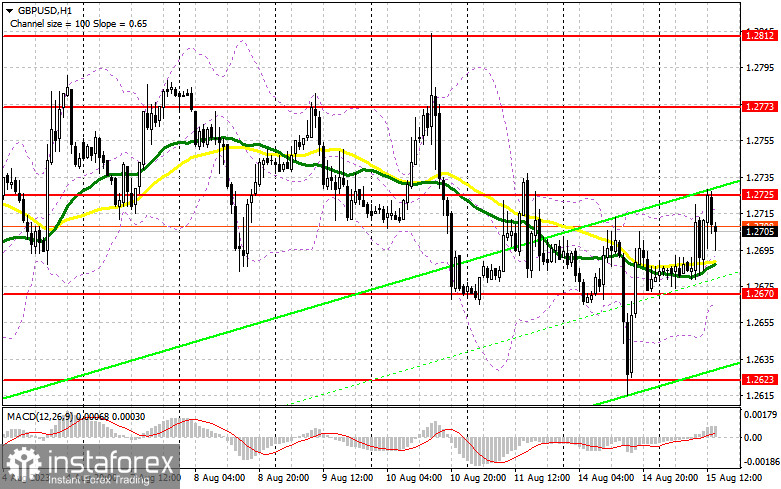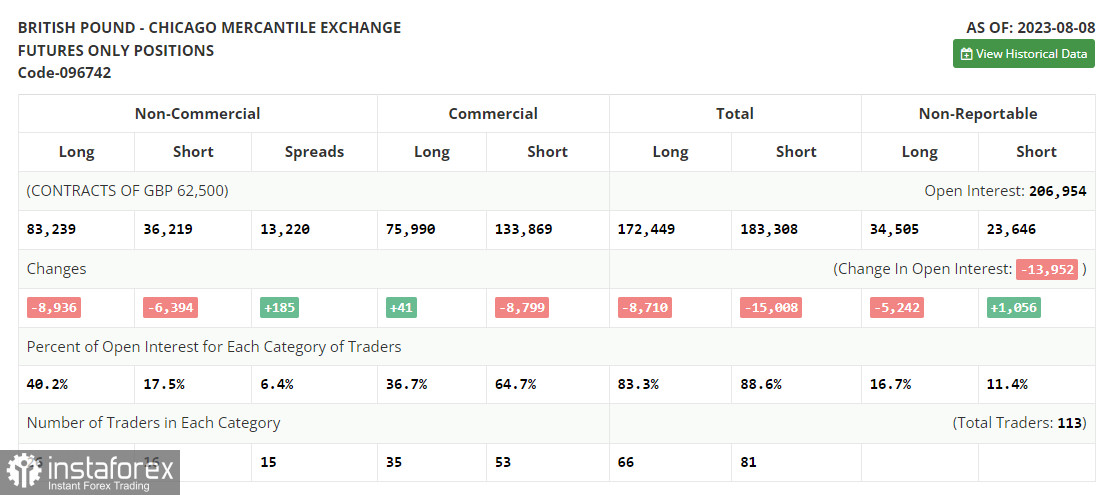In my morning forecast, I drew attention to the level of 1.2725 and recommended making market entry decisions based on it. Let's take a look at the 5-minute chart and see what happened there. The growth and formation of a false breakout at this level led to a sell signal, which, at the time of writing the article, resulted in a drop of more than 25 points. Technically, nothing has changed for the American session.

To open long positions on GBP/USD:
The wage growth data in the UK reached a new high since record-keeping began supporting the pound during the European session, but the level of 1.2725 was not breached. In the second half of the day, quite important retail sales data is expected in the US. Growth above economists' forecasts will put pressure on the pair, leading to a drop in the pound against the US dollar. If the figures turn out to be worse than economists' forecasts, which would indicate a likely further slowdown in inflation mixed with lower US GDP growth rates, the pressure will increase on the US dollar, prompting further growth in GBP/USD.
Of course, in the current situation, it would be nice to see the presence of pound buyers around the same support level of 1.2670, which has not yet been tested. I prefer to act from this level on the downside after the formation of a false breakout, which will provide an excellent entry point to rise to the resistance of 1.2725, which has not been breached so far. A breakthrough and top-down test of this range against the backdrop of weak US data will form an additional buying signal, strengthening the pound's position, and allowing it to reach a new high of 1.2773. If it breaks above this range, we can talk about a surge to 1.2812, where I will take profit.
In the scenario of GBP/USD falling and the absence of buyers at 1.2670 in the second half of the day, especially in the case of strong retail sales growth data, pressure on the pair will only increase, leading to a more significant sell-off. If this happens, I will delay long positions until 1.2623. I will only buy there on a false breakout. You can immediately open long positions on GBP/USD on a rebound from 1.2592 with a correction target of 30-35 points within the day.
To open short positions on GBP/USD:
Bears have accomplished their targets and done all they could, but a lot will depend on American statistics. The formation of another false breakout at the 1.2725 level after the report release will create a sell signal, aiming for a decline to the 1.2670 support level formed as a result of yesterday. A breakthrough and a reverse test from the bottom up of this range will provide an entry point for selling with the target of updating 1.2623 – the minimum for this month. The more distant target will be the 1.2592 area, where I will take profit. In the case of GBP/USD growth and the absence of bears at 1.2725 in the second half of the day, bulls will regain control of the market, leading to the formation of an upward correction. In such a case, only a false breakout in the vicinity of the next resistance level at 1.2773 will create an entry point for short positions. In the absence of activity there, I advise selling GBP/USD from 1.2812, aiming for a rebound of the pair downward by 30-35 points within the day.


Indicator signals:
Moving Averages:
Trading is conducted around the 30 and 50-day moving averages, indicating a sideways market.
Note: The period and prices of the moving averages are considered by the author on the H1 hourly chart and differ from the general definition of the classical daily moving averages on the D1 daily chart.
Bollinger Bands:
In the event of a decline, the lower boundary of the indicator in the area of 1.2670 will serve as support.
Description of indicators
• Moving average (moving average, determines the current trend by smoothing volatility and noise). Period 50. It is marked in yellow on the chart.
• Moving average (moving average, determines the current trend by smoothing volatility and noise). Period 30. It is marked in green on the graph.
• MACD indicator (Moving Average Convergence/Divergence — convergence/divergence of moving averages) Fast EMA period 12. Slow EMA period 26. SMA period 9
• Bollinger Bands (Bollinger Bands). Period 20
• Non-profit speculative traders, such as individual traders, hedge funds and large institutions that use the futures market for speculative purposes and meet certain requirements.
• Long non-commercial positions represent the total long open position of non-commercial traders.
• Short non-commercial positions represent the total short open position of non-commercial traders.
• The total non-commercial net position is the difference between the short and long positions of non-commercial traders.
 English
English 
 Русский
Русский Bahasa Indonesia
Bahasa Indonesia Bahasa Malay
Bahasa Malay ไทย
ไทย Español
Español Deutsch
Deutsch Български
Български Français
Français Tiếng Việt
Tiếng Việt 中文
中文 বাংলা
বাংলা हिन्दी
हिन्दी Čeština
Čeština Українська
Українська Română
Română

